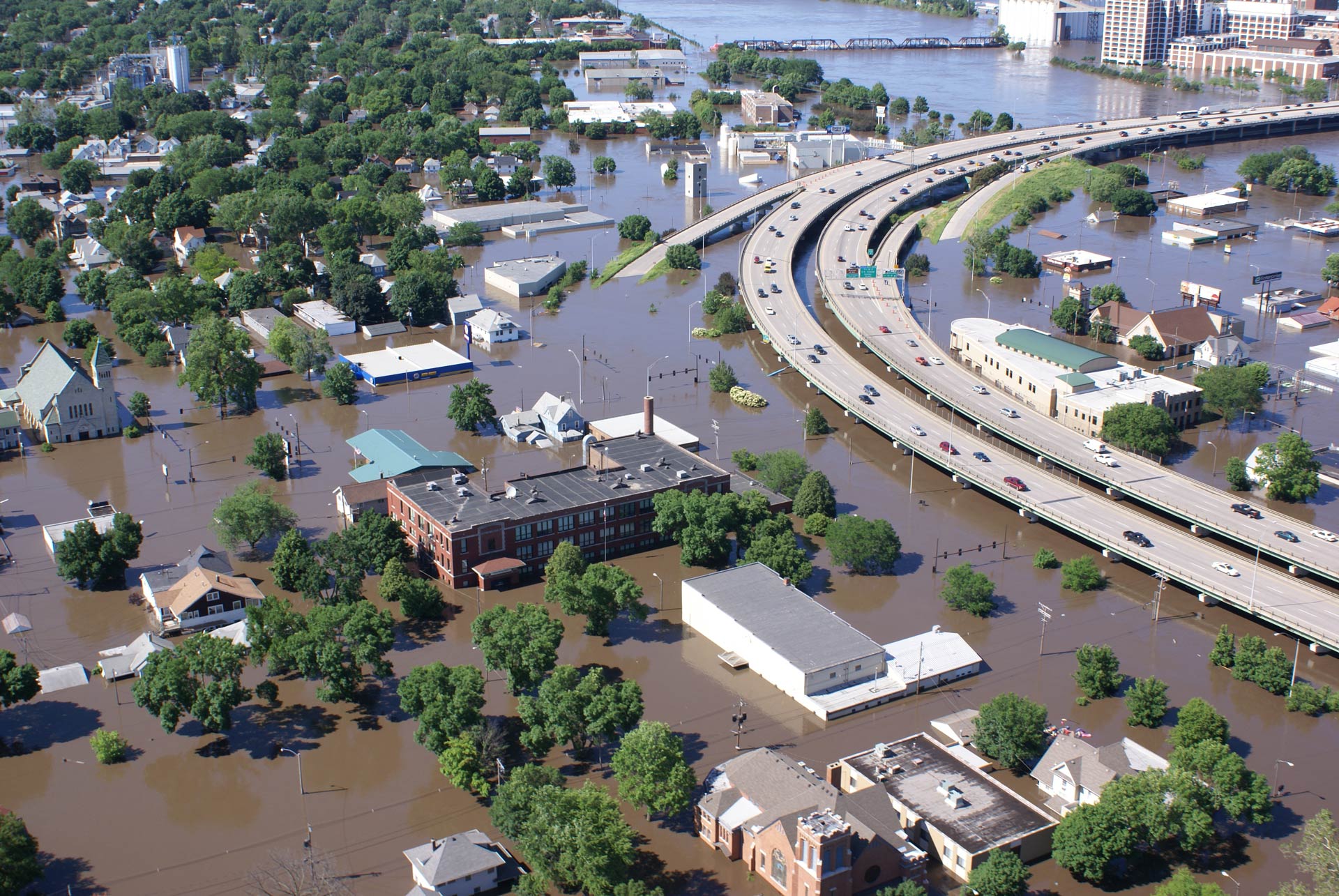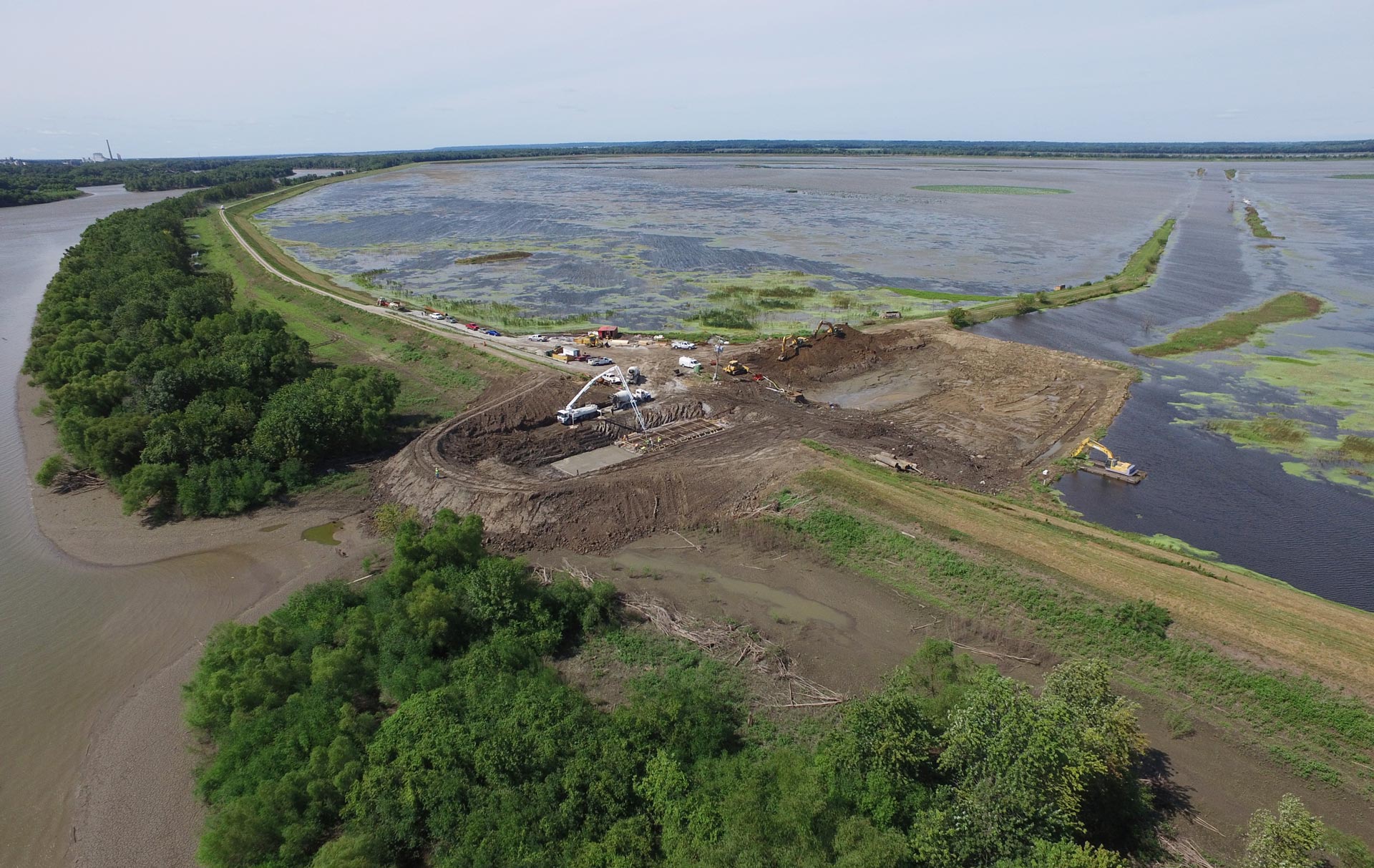Johnson Creek Restoration, Portland, Oregon
Challenge
Johnson Creek has been plagued by “nuisance” flood events throughout its history, particularly in and around Foster Road, a residential area that flooded as often as every one to two years. In 1964, Johnson Creek experienced one of its largest floods; almost 1,200 structures were flooded, and the next several years marked numerous ineffective attempts at flood mitigation, as well as the near total loss of the salmon and trout species in the river.
Project Details
- Location: Foster Floodplain, Portland OR
- Population: 620,000 (Portland metro area)
- Strategies: Buy-outs, Floodplain restoration, Berm removal
- Cost: $20M
- Benefits: Reduced flood damages, Ecosystem restoration, Water quality, Recreation
History
Johnson Creek is a 26-mile river in a 54-square-mile watershed; nearly half of the area falls within the Portland watershed. Prior to urbanization, Johnson Creek was forested; however, as pioneers settled along the banks of the river, they cleared many of the trees for housing and railroad materials.
In the 1930s the Works Progress Administration (WPA) lined and channelized 15 miles of Johnson Creek with rocks, under the mistaken assumption that this would reduce flooding. There have since been dozens of ideas on how to arrest the flooding, but none proved successful until 1995, when the Portland Bureau of Environmental Services (BES) finalized the Johnson Creek Resources Management Plan, with a focus on natural infrastructure.

Solution
In October of 1996, the Portland City Council adopted the Flood and Landslide Hazard Mitigation Plan, which recommended the acquisition of the most vulnerable properties in the floodplain. In 1997, the BES began acquiring vulnerable properties and moving people out of the floodplain. Since that time, more than 70 structures have been removed and 107 acres are in permanent conservation.
With many of the most vulnerable structures out of the way, BES began reconnecting Johnson Creek to its floodplain. This initially required the removal of more than 50,000 cubic yards of soil, or approximately 5,000 dump truck loads from the lowlands adjacent to the creek. The BES restored approximately 63 acres of wetland and floodplain habitat and over half a mile of Johnson Creek, specifically in the Foster Floodplain Restoration Area, making it habitable once more for ESA-listed Coho and Chinook salmon and steelhead trout. They then added over 200 large pieces of wood to improve habitat along the stream bank and created two backwater channels to provide resting areas for fish during peak flows. The BES additionally re-vegetated the stream bank by planting 20,500 native trees, 70,500 native shrubs, 4,750 wetland plants, and 1,000 pounds of native grasses, sedges, and forbs to further improve the area’s habitat for local fauna.
Finally, the BES rectified the creek’s channelization by removing the rock lining, as well as three bridges and three roads, increasing the capacity of the floodplain to absorb floodwaters.
Partners and Funding
The Johnson Creek Restoration Project was in part funded through a large grant from the Federal Emergency Management Agency (FEMA) for the sum of $2.7 million. Additional funding came in the form of Community Development Block Grants from the U.S. Department of Housing and Urban Development (HUD) as well as commitments from the City of Portland’s stormwater funding.
While BES was the main agency involved in implementing the project, it is important for projects like these to possess a champion. In this instance, Ann Riley, who worked with the Waterways Restoration Institute at the time, was the champion of using natural infrastructure to decrease flood risk in Johnson Creek.
Benefits
The Johnson Creek neighborhood was noticeably improved after this project. The restoration created a publicly-accessible natural area in east Portland, and included the creation of a pedestrian trail and bridge for wildlife viewing in the Foster Floodplain Restoration Area. BES also installed sidewalks, street trees, and stormwater sewers along Foster Road to better absorb or divert heavy rainfall.
In 2004, an ecosystem services valuation of the restored area found that the project would produce approximately $30 million in benefits over the course of 100 years from avoided property damages to residents and businesses, avoided traffic delays, avoided utility damage, water quality benefits, parks and open space benefits, fish and wildlife benefits, and air quality improvements.
This project is relatively recent, but it has already been proven effective. The Johnson Creek area experienced heavy rains in January of 2012, pushing Johnson Creek to more than 2 feet above its historic flood stage, and filling the restoration site with water. Despite the pressure, the floodplain held the high water, keeping Foster Road dry and local businesses open.

